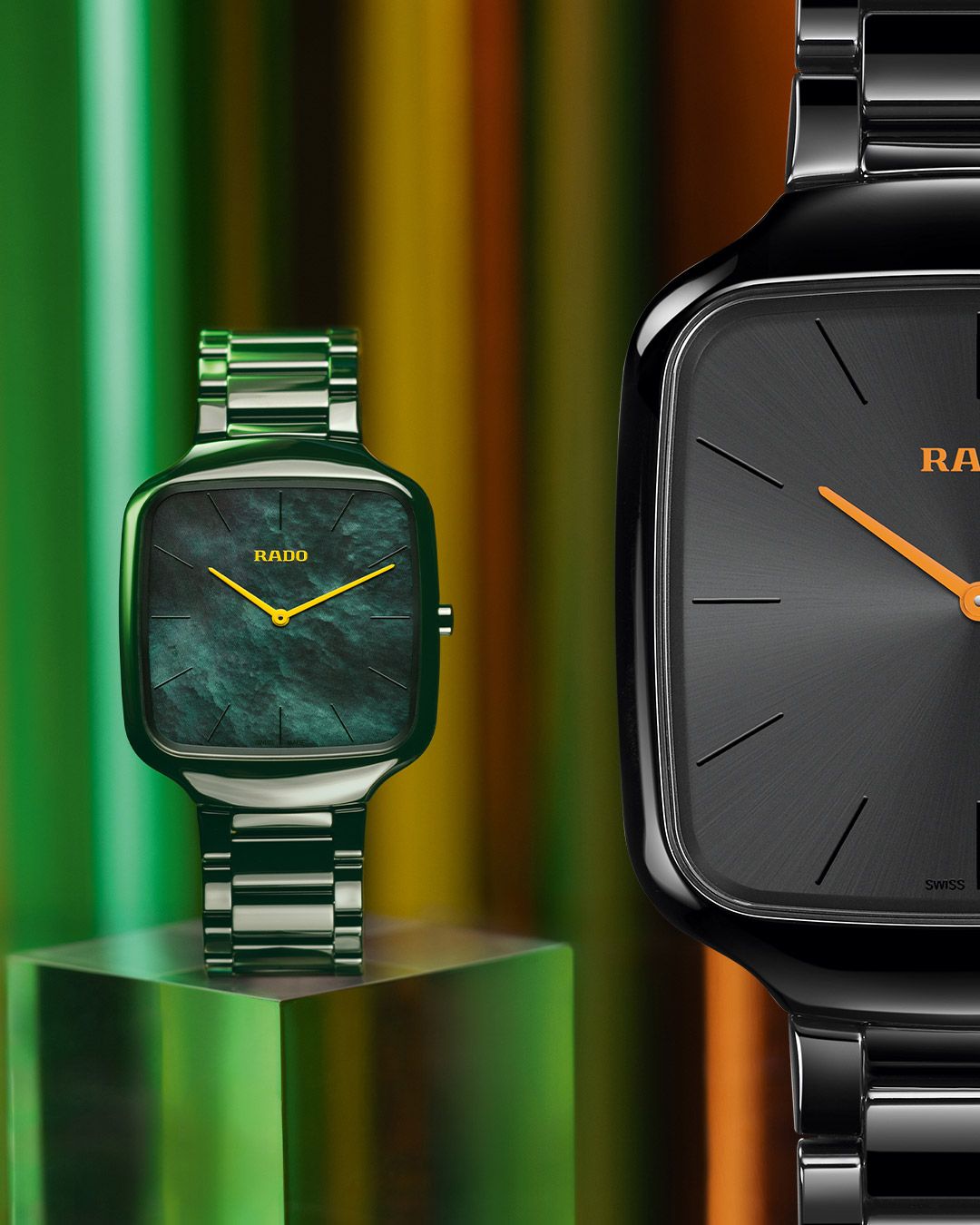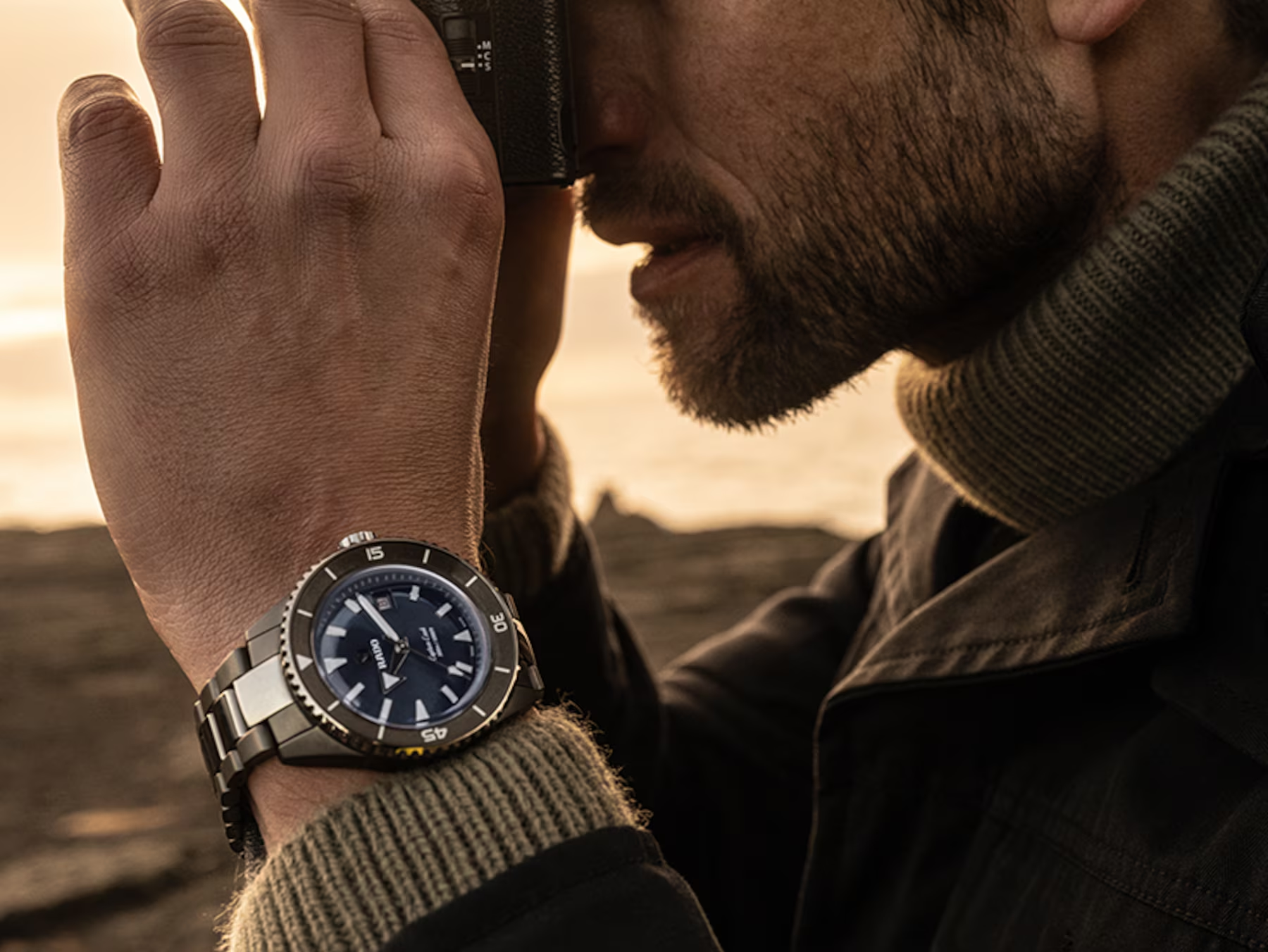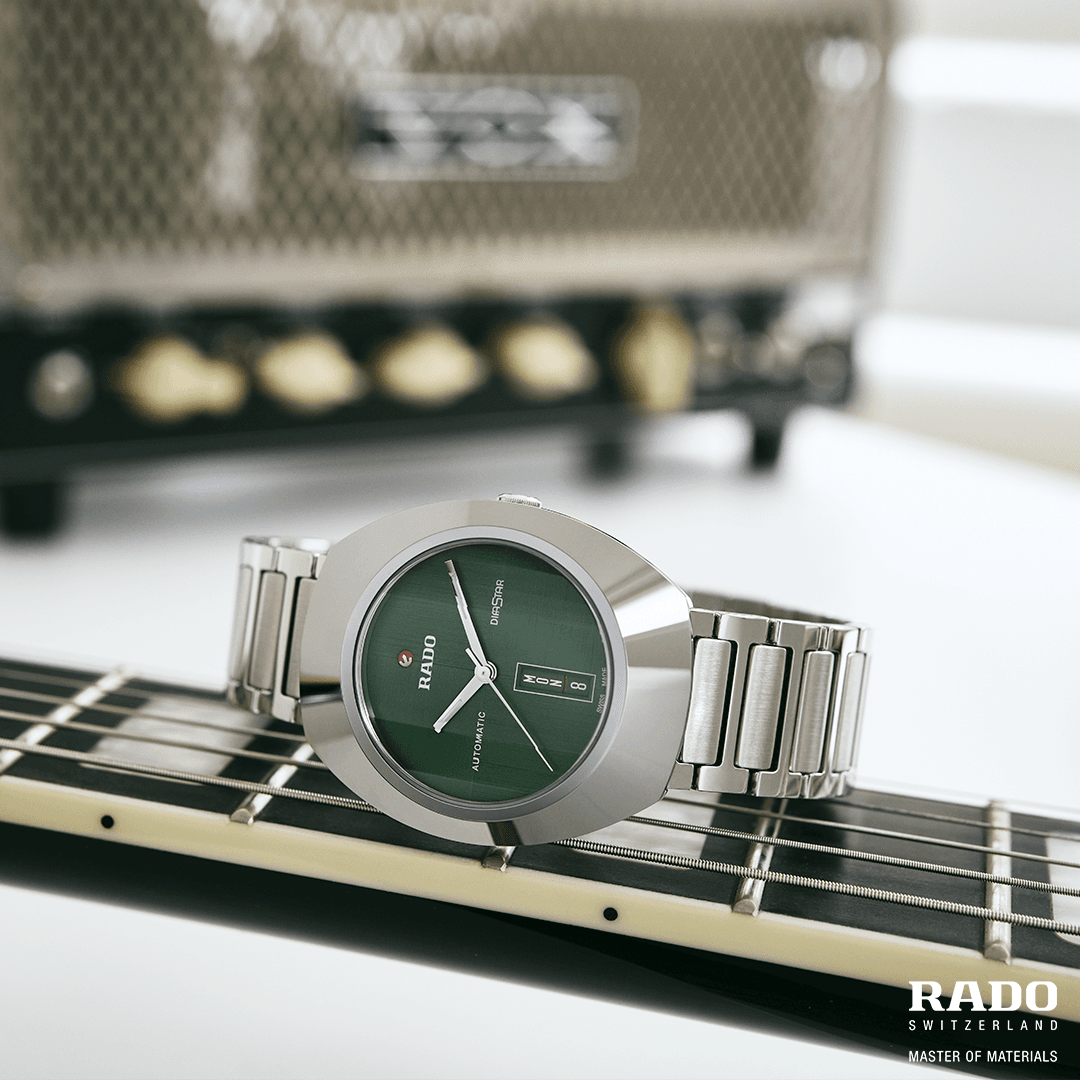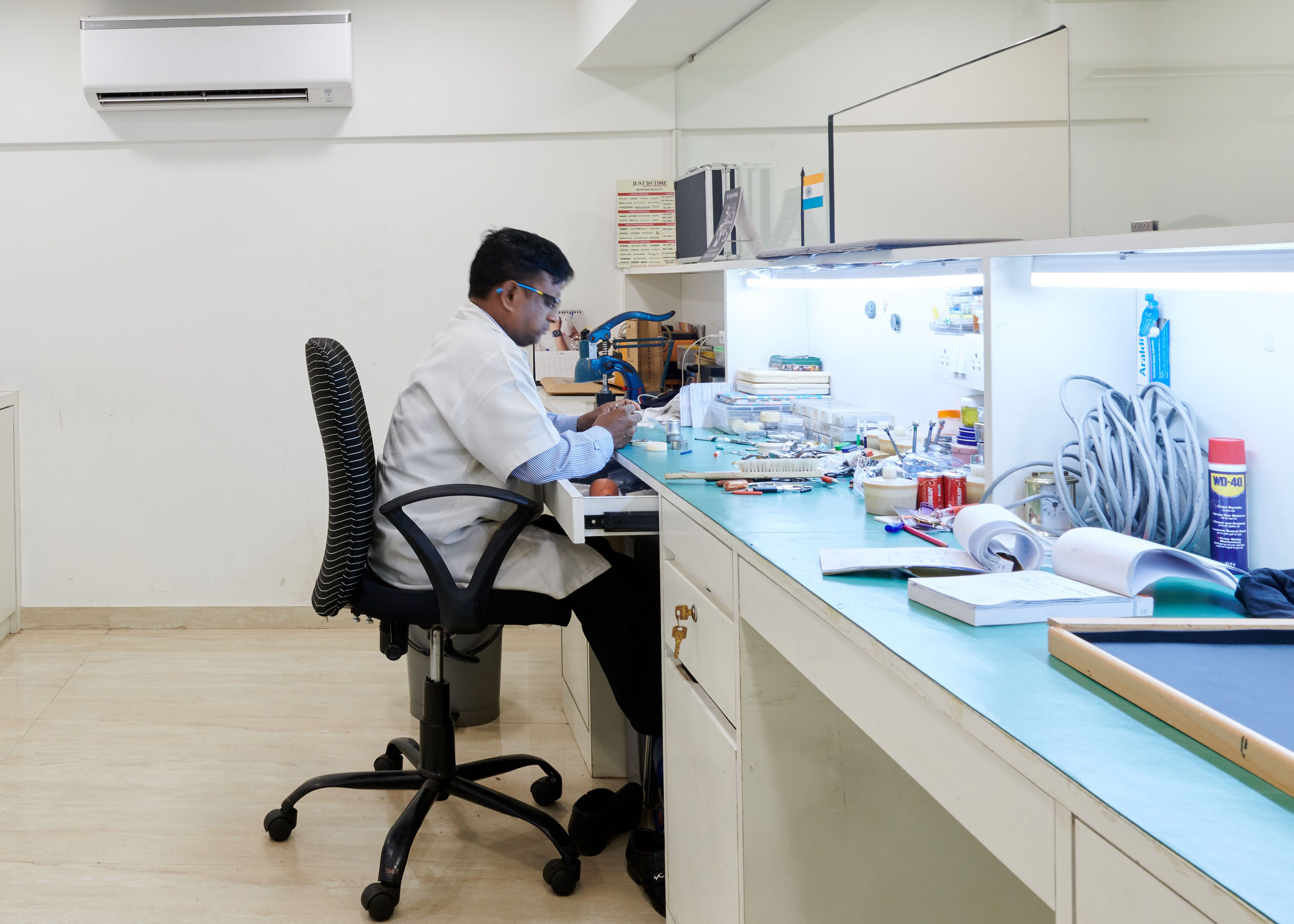Ceramics Or Metals? Guidelines To Maintain Your Rado
Rado, often celebrated as the "Master of Materials," has revolutionized the luxury watch industry by introducing high-tech materials that elevate both aesthetics and performance. The Swiss watchmaker is renowned for its bold approach to watchmaking, using advanced substances to create durable, scratch-resistant, and lightweight timepieces. Let’s explore some of the innovative materials that Rado has pioneered and perfected in its watches.
High-Tech Ceramic
One of the hallmark materials that Rado is best known for is high-tech ceramic. First introduced in the 1980s, Rado’s use of ceramic transformed the watch industry. The material is not only extremely hard and scratch-resistant, but it’s also lightweight and hypoallergenic, making it a comfortable choice for everyday wear.

The high-tech ceramic used by Rado undergoes an intricate process where ceramic powder is compressed and sintered at extremely high temperatures. The result is a durable material that’s smooth to the touch and resistant to wear and tear. Rado has since experimented with various shades of ceramics, from sleek black to gleaming white and even colourful ceramics in its more recent collections.
Plasma High-Tech Ceramic
Rado took its ceramic innovation a step further by introducing plasma high-tech ceramic. This process involves heating ceramic components in a plasma oven at extreme temperatures. The plasma furnace creates a metallic sheen on the surface of the ceramic without the use of any metal. The result is a distinctive silvery finish that gives the watch a futuristic, metallic look while maintaining the lightweight, scratch-resistant, and hypoallergenic qualities of ceramic.

What makes plasma high-tech ceramic special is its unique ability to mimic the appearance of metal while retaining the advantages of ceramic. Watches featuring this material, like the Rado HyperChrome collection, offer a cutting-edge aesthetic with unmatched durability.
Hardmetal
Before Rado's ceramic revolution, the brand first made waves with its use of Hardmetal, a material made from tungsten carbide. Known for its hardness and resistance to scratches, Hardmetal was the foundation of Rado’s earliest innovations, particularly in the Rado DiaStar line in 1962, which was marketed as the first scratch-proof watch.

Tungsten carbide is one of the hardest substances known to man, making it an ideal choice for durable watch cases. Though heavy compared to ceramic, it set the stage for Rado’s exploration into materials that could withstand the test of time, literally.
Sapphire Crystal
Sapphire crystal is another material that Rado uses extensively, particularly for the watch faces. Sapphire is incredibly hard, second only to diamond on the Mohs hardness scale, making it extremely scratch-resistant. Rado’s consistent use of sapphire crystal ensures that its watches not only look sleek but can endure the everyday rigors of wear. In many models, the sapphire crystal is treated with anti-reflective coatings to improve visibility while maintaining durability. This material is crucial in ensuring that Rado’s watches maintain their pristine look over years of use.

Ceramos™
Ceramos™ is a proprietary material created by Rado that blends the best of both worlds—ceramic and metal. Composed of high-tech ceramic and a metallic alloy, Ceramos™ offers the scratch-resistance and lightness of ceramic with the luster and solidity of metal. The material adapts to the wearer’s skin temperature quickly, providing extra comfort. Ceramos™ can be polished to a beautiful sheen, enhancing its visual appeal. Rado has used Ceramos™ in several collections, such as the True Thinline and Centrix models, blending elegant design with advanced material science.
Stainless steel
Stainless steel is found in all areas of daily life. Corrosion and temperature resistant, durable and robust are some of the qualities that make this material highly attractive to watchmakers. Steel is an iron-based material with a chromium content of at least 11%, which protects the material against corrosion. Rado uses stainless steel 1.4435 as standard for all external watch components. This is a high-quality austenitic, non-magnetisable steel comprised of 18% chromium, 14% nickel, 3% molybdenum and a very low percentage of carbon, which makes it particularly resistant to corrosion.

Service and maintenance
You can find a large selection of Rado watches at a Just In Time retail store near you. Be it ceramic, stainless steel, hardmetal or high tech ceramic, you will find a plethora of Rado watches to choose from at any of the retailer’s 75+ stores across various Indian cities. When it comes to service and maintenance of Rado watches, the Just In Time service centre is your best bet. Equipped with the relevant knowledge and skill, they not only cater to Rado’s but also service every kind of timepiece. The service centre will ensure that your watch keeps ticking for years to come. Attached to almost each of its stores across India, there is a Just In Time service centre that can help you service your watches. Since watch care is an integral component of watch collecting, Just In Time Service centre has some expert tips for you.
Just In Time Service Tips
- Ceramic watches should be handled with care and one must ensure that you do not drop it as this can lead to breakage of the watch.
- On the other hand, do not let water near your leather strap watches as this can harm the leather giving rise to early wear off.
- Metal bracelets require a very different approach as they are made with a different material.
- You must be very careful with gold watches and keep it far away from perfumes or any chemicals as this can harm the metal, leading to corrosion.
Stainless steel watches should be regularly cleaned with a soft cloth to avoid wear and tear.

Rado’s commitment to innovation in materials has cemented its position as a leader in the luxury watch market. From high-tech ceramic to plasma ceramic, Hardmetal, and sapphire crystal, Rado has consistently pushed the boundaries of watchmaking. The brand's dedication to creating timepieces that are not only beautiful but also durable, lightweight, and comfortable is a testament to its pioneering spirit. Each material Rado uses serves to enhance the functionality and longevity of its watches, ensuring they remain as timeless as the moments they measure.
No articles found





